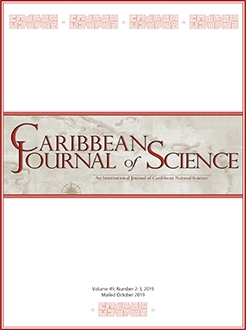The biogeographic origins of flora and fauna in the Caribbean have remained a hotly debated topic in island biogeography, with evidence to suggest that both vicariance (tectonic activity) and oversea dispersal mechanisms are at play in isolating species distributions and/or expanding them. Here we document the first evidence of the Central American Snapping Turtle (Chelydra rossignonii) on Utila Island, part of the Bay Islands, Honduras. Information is presented on two adult female individuals that were encountered washed ashore following separate extreme weather events in the region; most recently a single specimen was retrieved following Hurricane ETA in November 2020. Though dispersal in this case has not led to establishment, our novel observations may support previous inferences that long-distance overseas dispersal is a valid mechanism for explaining the occurrence of a potentially wide variety of terrestrial and freshwater biodiversity on the Bay Islands, as well as in the wider Caribbean.
How to translate text using browser tools
19 April 2021
Central American Snapping Turtle (Chelydridae, Chelydra rossignonii) on Utila Island, Honduras, Demonstrates Hurricanes are a Likely Past and Future Oversea Dispersal Pathway for Species Introduction in the Caribbean
Tom W. Brown,
Ely Augustinus,
Andrea Izaguirre,
Jose Mario Solis
ACCESS THE FULL ARTICLE

Caribbean Journal of Science
Vol. 51 • No. 1
July 2021
Vol. 51 • No. 1
July 2021




